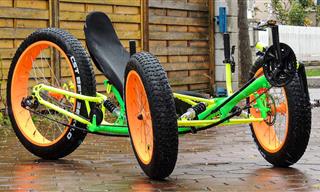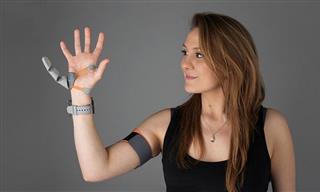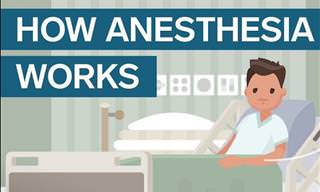
Most of us associate kites with our childhood. Perhaps, it is time to rethink that concept today. A California-based company named Makani in collaboration with energy giant Shell has created a self-flying ‘energy kite’ that aims to tap into the growing wind power around the world.
This is exciting news because the technology that has been developed can harness the strongest winds in the middle of the ocean. These are spots that are too far for the offshore turbines to reach. The company’s autonomous and light-weight kite looks like an airplane strapped to a base and installed on a floating platform in the water. Currently, tests are underway off the coast of Norway to determine the feasibility of the device.
You would be surprised to know that merely 6 percent of the world’s energy comes from wind power at present. Makani’s goal is to utilize the energy kite to produce utility-scale power which will in turn help in electrifying communities around the world.
An energy kite uses a wing that is bound to a ground station to effectively harness energy from the wind. As the kite reaches a height of about 300 meters (984 feet), it starts gliding in a vertical loop. When the kite flies independently in a loop, the rotors on its wing spin as the wind moves through them and drive a permanent magnet motor-generator. This allows the production of electricity that moves down the conductive tether and is transferred onto the grid.
Apart from being super lightweight, these kites are made of carbon fiber and have an 85-foot (26 meters) wingspan. The device is launched from a base station and is bound by a 1,400-foot (426.7 meters) tether. It then flies autonomously in circles with the assistance of computers. The company has stated that each of these kites has the capacity to generate around 600 kilowatts of electrical power. This would be sufficient to power almost 300 homes.
Furthermore, these energy kites are almost 90 percent lighter than turbines of an identical power rating. Their benefits are hence numerous.
Millions of people who live near the ocean don’t have a good resource for renewable power but do have offshore wind resources. These lightweight energy kites can make it possible for tapping that resource in the most economical way while also bringing renewable power to countless people's homes.
“Currently there is no available technology that can economically produce energy from the wind in these places,” technical program manager Doug McLeod was quoted as saying at the Airborne Wind Energy Conference 2019. “As a floating airborne wind energy technology, Makani believes that we can unlock this stranded resource.”

Image credit: Makani
Initially, two tests were conducted at the North Sea in August 2019. The first flight was a quick one and the second was a longer-duration test that followed commands from the flight controller. Both the tests relayed plenty of useful information to the engineers that they will use to conduct more simulated test flights and further enhance the system.
Meanwhile, the results of the ongoing tests in Norway will soon determine if the energy kites can survive and function in a range of environmental conditions and will also help perfect their landings at sea. If these tests prove to be successful, it could be a breakthrough for floating offshore wind and become a big step towards increased access to energy resources that have been trapped for long above waters that are too deep for fixed wind turbines. Most importantly, it will help provide electricity to so many people who live along the world’s coastlines.
Visit the Makani website for more details.
 5:50
5:50
The Rise of the Machines: Can Humanoid Robots Help Us?
Will humanoid robots change the way we work forever?

6 Amazing Technologies That May Transform Our Tomorrow
In this article, we will look at some amazing future technologies that have the potential to change our world by the next decade.
 10:20
10:20
These Future Vehicles Will Make Traveling So Much Fun!
Take a look at some of the coolest advanced vehicles that are all set to rule in the future.

This New Invention Could Revolutionize the Use of Prosthetics
This new invention can be a huge boost for the world of prosthetics

Scientists Develop 'Flying Dragon' Robot to Fight Fires
Scientists in Japan have created a water-spitting 'flying dragon' robot to fight fires.

AI-Enhanced Drones Will Now Help Locate Lost People
A team of researchers have developed AI-enhanced drones that will help find lost people in the woods. Find out more.
 13:21
13:21
The Race to Complete the World's Second-Tallest Skyscraper
Malaysia is all set to unveil the world’s second tallest skyscraper.

Incredible New Bionic Arm Fuses With Woman's Nerves
Karin's bionic hand is real sci fi, making her one of the first true cyborgs.
 3:50
3:50
Do You Know What Alzheimer's Really Is?
This video will shed light on the different stages of this complex and incredibly destructive disease.

PayPal Versus Credit Cards: Here's the Lowdown!
Just how safe is PayPal? Should you have a PayPal account or should you pay for all online purchases using a credit card? All is revealed here!

5 Robotics Trends Anticipated in 2024
What does 2024 have in store for the field of robotics?

25 Pics Showing How People in the Past Imagined the Future
Let’s see how the people of the past imagined the future and find out if their fun predictions came true with these 25 vintage pictures

INTERACTIVE: A Guide to the Workings of the Human Body
The human body is the most complex machine known to man, and the amount of things it has to do to keep us alive is incredible. View this interactive guide now.
 5:08
5:08
Erecting a Behemoth: Installation of an Offshore Oilrig
How do they install an offshore oilrig? This video will show you, step by step, how it is done.

14 Retro Inventions That Stunned Crowds Back in the Day
These inventions were the talk of the town back in the day.

Wow! Who Knew That Jupiter Was So Mesmerizing?
Take a look at Jupiter like you've never seen it before!

New Study: A Pill that Works Out Your Muscles?!?
New study shows that, though we are not there yet, a pill can and probably WILL come out that works out the muscles and grows them.

16 Interesting Things We Bet You've Never Seen Before
Once we have finished school and learned all the necessary skills at work, it may seem that no further studying is necessary. 16 interesting photos you wish you had seen in textbooks at school.

Is it REALLY the Coffee that Wakes Us Up in the Morning?
A recent study has revealed that the coffee you drink may just be a placebo...

Travel From the Sun to Pluto With Our Interactive Guide!
The solar system is a fascinating place, and we wanted to bring you an interactive journey that you can use to travel through it. Enjoy the journey!

These Are the Miracles That Happen in Our Bodies Every Day
There is a lot that happens inside our bodies every single day. Did you know any of these facts?

Science Breakthrough: An Immunization Against Skin Cancer?
This scientific breakthrough offers hope for those who are struggling with skin cancer. You are now invited to discover more about this revolutionary vaccine.

8 Fascinating Heartbeat Facts You Never Knew Before
These heartbeat facts will leave you astounded.
 7:21
7:21
Science: 20 Mechanical Principles Demonstrated Using Lego
In this video, we'll explore a variety of fascinating mechanical mechanisms, all demonstrated using Lego models.
 56:12
56:12
What's the Largest Thing in the Universe?
In this video, we look into some of the mightiest structures in the known universe.

Take an Incredible Tour of Our Colossal Milky Way Galaxy
Fly Through the Milky Way Galaxy!

10 Tech Products You Must Double-Check Before Buying
Beware! These tech products are most commonly faked.

First US Embryo to be 'Edited'; Rise of Genetic Changes!
Could the first human embryos be genetically modified?

Do You Have One Of These RARE Genetic Traits?
How unique are you? You might have several rare genetic traits that make you unlike most of the world's population!
 9:31
9:31
The Channel Tunnel - The 7th Wonder of the Modern World!
The construction of the Channel Tunnel is said to be an impossible feat!
 3:16
3:16
Discover How Anesthesia Affects Your Body and Mind
If you were ever curious about how exactly anesthesia works, then this video has all the answers!
 5:48
5:48
3 Surefire Ways to Always Identify Pseudoscience
Find out how you can identify pseudoscience, and learn how it differs from actual science.

Doctors Make History With First Whole Eye Transplant
Surgeons in New York have performed the world’s first transplant of an entire human eye!
 6:31
6:31
The Psychology Behind Why Some People Are Habitually Late
Now we finally know why some people are habitually late.
 3:16
3:16
You Wouldn't Believe How Far Technology Has Come
Take a look at the advancements of technology in this video. Impressive.

These 11 Brain Facts Are Enough to Boggle Your Mind
When you consider the sheer complexity of the human brain, it's difficult to wrap your head around it. Learn these 11 fascinating facts about the human brain.

Let's Learn All About Your White Blood Cells
White blood cells (WBCs) are the part of your immune system which is responsible for fighting infection. Learn all about them here!
 3:28
3:28
Did You Know That Batteries and Magnets Can Make Magic?
Here are some cool magic tricks you can try at home using only a few magnets, batteries and other household items. Watch carefully as the magician puts together a completely self-reliant motor

6 Signs That Someone is Listening on Your Cellphone Calls!
With technology advancing all the time, there is the ever-increasing chance of our phones being tapped. Here are 6 signs that your phone could be tapped.

10 Unanswered Mysteries You've Always Wondered About!
You might not have thought about the most curious cases of the bizarre things that we encounter every day.

6 Harmful Toxins You Didn’t Know You Encounter Daily
These toxic chemicals can be found in everyday products and can be extremely dangerous to us.
 16:55
16:55
Sleep Inventions: 16 Gadgets to Help You Doze Off
If you frequently struggle with sleep, then trying these amazing new sleep innovations could help change your life.
 12:55
12:55
Watch This Man Build a Future Using Trash from the Past
In this video, you will see what this incredible community has been able to accomplish by building homes from recycled materials.
 16:28
16:28
WATCH: This is What Occurs In Our Brain When We're In Love
We all love being in love, and actually crave it and need it, but what actually happens to our brains when we're in love? Watch this TED Talk to find out.
 5:03
5:03
WHY is Sugar So Devilishy Addictive?
There seems to be a fascinating scientific explanation for why our will power is weak when it comes to sugar!
 5:32
5:32
The Science Behind Why Laughter is the Best Medicine
They say laughter is the best medicine. But why exactly do we laugh?
 4:13
4:13
What Does Medicine ACTUALLY Do In the Body? Fascinating.
What really happens in our bodies when we take medicine, have you ever wondered? This video will answer your question.


